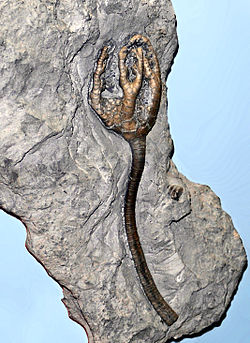| Onychocrinus Temporal range: | |
|---|---|
 | |
| Fossil of Onychocrinus species from Carboniferous of United States | |
| Scientific classification | |
| Kingdom: | |
| Phylum: | |
| Class: | |
| Order: | |
| Family: | |
| Genus: | †Onychocrinus Lyon and Casseday, 1860 [1] |
Onychocrinus is an extinct genus of feathered crinoids that lived during the Carboniferous period, approximately 353.8 to 318.1 million years ago. It belonged to the family Synerocrinidae.